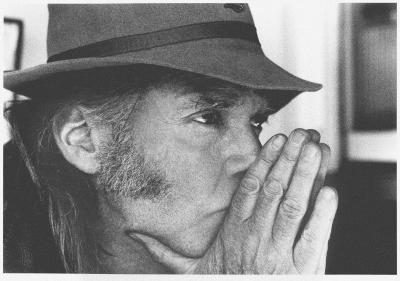
2007-12-09
Somehow, it turned out the while all his aging friends are busy looking for partners for different reunion tours, or digging in their archives for special bonus material to add to their re-released classic album, trying to appeal a younger crowd,
Neil Young is living yet another prolific period in his career. It's been several years, and several albums now, the he manages to hit the spot again and again.
Young's stroke of re-success began back In 2003 with the concept album "Greendale". The album told the story of a family, living in greendale, torn apart as a result of a murder. This album was the one to grant Young with the media's focus once again after keeping a low profile during most of the 90's. "Greendale" was received in mixed reactions. Basically, most of the audience and critics believed that after spending the 90's as traveling musician, oriented to several different bands and musical styles, a hazy anti- radio related material concept album wasn’t the right choice as a comeback album.
The following album, "Prairie wind", was the one that started a series of well acclaimed emotional albums; the acoustic tour supporting the album was recorded and documented with an almost magical touch by Jonathan Demme in a movie called "Heart of gold". The movie manages to perfectly capture the older version on Neil young, peaceful with his coming in age and even with his brain aneurysm, discovered not long before the movie was shot.
After receiving successful treatment he came out victorious with his war again the Aneurysm, but fast enough he lead another war. In his following 2006 album (only a year after "Prairie wind came out) he released his anti- war, anti – Bush album. backed up by some old friends and a 100 voices choir, Neil recorded the album "Living with war". Giving a peace of his mind, and hope about the war in Iraq and the Bush administration.
Young remains, as he was in the sixties and still is, the good kind of hippie. He wants love instead of war. He wants truth and not greed. With tracks glorifying the United states, but criticizing George Bush's government, the album was critically acclaimed even before it was actually released. The varied samples that leaked onto the internet and the appealing secrecy this album was shrouded in while recorded managed to intrigue and surprise everyone. Young proved that the magic was still there.
The next two releases were the spectacular show "live at the Fillmore East", and the show that captured Neal at one of his prime performances the "Massey Hall" solo concert recorded in 1971. 26 year old young sits throughout the concert with his acoustic guitar and piano making the hall tremble from excitement. The 1971 version of the young Neal Young already contemplates life's worth, and loss in tracks like "old man" and "the needle and the damage done" that will later on appear his later masterpiece "Harvest". If the Fillmore concert drove the crowd wild, the Massy hall concert didn't leave a dry eye in the room.
The new album, "Chrome Dreams II" segues the never released 1977 album titled "Chrome Dreams". The first "Chrome Dreams" was replaced by the release of "American Stars N' Bars" and most of the tracks, up until this day was kept as a myth, or mentioned as rare tracks. On the album, he dusts off some old tracks, adds some new tracks, and basically revamp it all.
"Chrome Dreams II" is based on the purity of Young's core music. Starting on the way he approaches his songs, his inaccurate but perfect production that makes him so human and his unique style pours out of tracks like "Boxcar" and "Beautiful bluebird". The old breakouts come in the form of tracks like "Dirty old man", "No hidden path" and the closing beautiful track "The way"
But without a doubt, the main reason we all gathered here for is the 18 minuets track "Ordinary people", written in 1988 for the album "This note's for you" and was never released formally. Though it was often played on the "sponsored by nobody" tour. "Chrome Dreams II" is the first time this song receive it's rightful respect.
"Ordinary People" is a song that really moves you, especially, if not only, for the fact that it is Neal Young that performs it. Young has always showed preference for the small everyday people rather then the big corps. In a way he belong to a more romantic era, when the simple man stood in the center of the things, fighting for his rights, love, and respect. As Neal described them "Some are saints, and some are Jerks, everyday people" ". Young describes the fight between the simple people and the drug lord, the big corp., the government . a man who wakes up early and works hard for his everyday needs.
 Everyday People (Photo by Pegi Young)
Everyday People (Photo by Pegi Young) Even though Young had his ups and downs, the more and less focused moments in his career, he was always the real working class hero. The waved angry hand in the mop asking for change, freedom and rock n' roll. "Chrome Dream II" is released in a perfect timing and perfect position in Neal's long Discography. This masterpiece reaches out from the past and settles in the center of the fragile 2000's. one of the only true albums you can call "Instant classics"
It doesn't matter what happens around the world. Bush for president, McDonalds enter the backyard of third world countries – Young will protest, will always fight for a right and better world. He is the truest, honest real hippie around. And that being said in the most complimenting way there is. "They got faith in the regular guy/ patch of ground people".
Roy Povarchik

